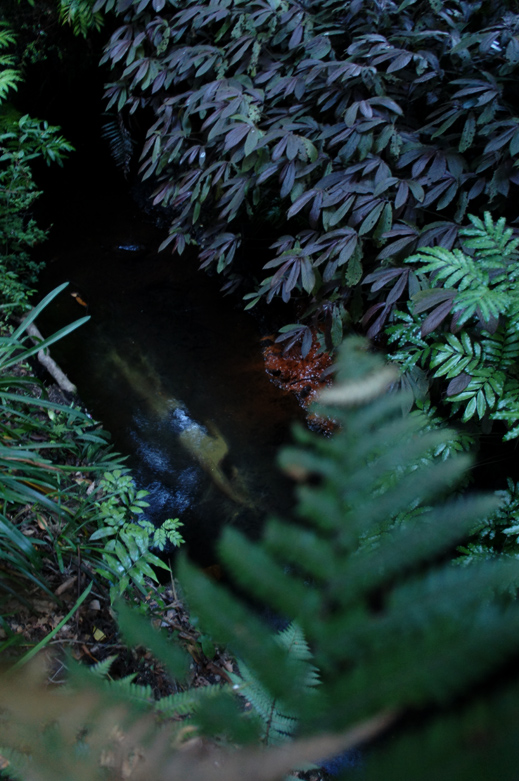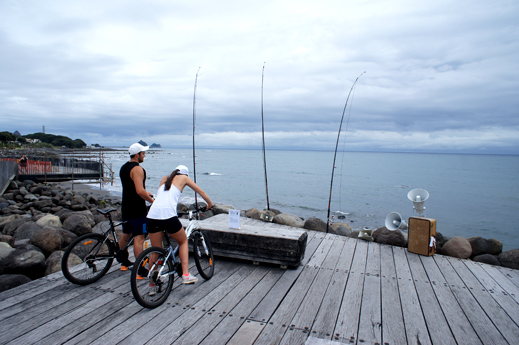England Expects by Allan Giddy

Use of a flash to take the above photo obscures the fact the image was taken at night in Pukekura Park. While simple the work was entirely engaging in it’s location.
Alternative energy pioneer Allan Giddy exhibited two works at SCANZ 2015:water*peace. The first, shown above was a projection of the work Night swimmer onto a small stream in Pukekura Park.
Giddy has described the project as follows: “a Sisyphean swimmer toils relentlessly against the current. His single stroke, trapped in an endless glitch of video, pulls a moment into a string of moments, into a night of moments. This capsule of time, his personal bubble of nowness, ends only with each sunrise.”
The artist also presented a work on New Plymouth’s foreshore, called England Expects … (Aotearoa) 2014-15. This project is solar powered, and uses three mics on the tips of fishing lines – which turns them into aeolian harps (which are blown by the wind). The audio created is mixed with the UK weather forecast, and a recorded response by violinist Alison Blunt of the London Improvisers Orchestra.
A special implementation of the project at SCANZ involved waiata sung by Jo Tito, connecting the specific location to the British influences in the work.
As Giddy said “this work contains elements of past (violin), present (waiata and aeolian fishing lines) and future (shipping forecast).
The musical composition was intended to bind the two less predictable sonic inputs, while the fishing lines anchored the ‘tone’ of the work in real time. The sonic output varied over time as the lines responded to tide height and wind strength, whilst a hint of things to come will be ever present in the shipping forecast. The system was powered by the sun, while the waiata from the land responds to the imposition of this British installation.”
Matt Saunders mixed the prerecorded audio.
About Allan Giddy
This work continues Giddy’s practice of creating ‘active’ public installations that respond directly to the environment.
Allan’s pioneering use of alternative energy systems and light in ‘time-based sculpture’ began in 1992. Over time his practice has expanded into the public domain, specifically public sited ‘active sculpture,’ aimed at the reinvigoration of public spaces.
He is one of Australia’s foremost proponents of sustainable energy systems, electronic interconnectivity and interactivity embedded in physical art objects.
His work has been shown at the Tate Modern, in ISEA and TISEA (International Symposia on Electronic Art), and numerous other venues internationally, from Canada and Finland to Greece, Vietnam and Bulgaria. In recent years he has completed a number of large public commissions, in Australia, China, Ireland, and Germany.
In addition Allan also directed and co-curated energy-in-art exhibitions at UNSW’s Solar Research Centre (SOLARCH), Little Bay, Sydney in 1999 and 2002, Australia’s first solar art exhibition “Desert Equinox” in 2012, and La Lune (energy in art) on Sydneys North Shore.
Giddy currently directs the Environmental Research Initiative for Art (ERIA) COFA University New South Wales.



